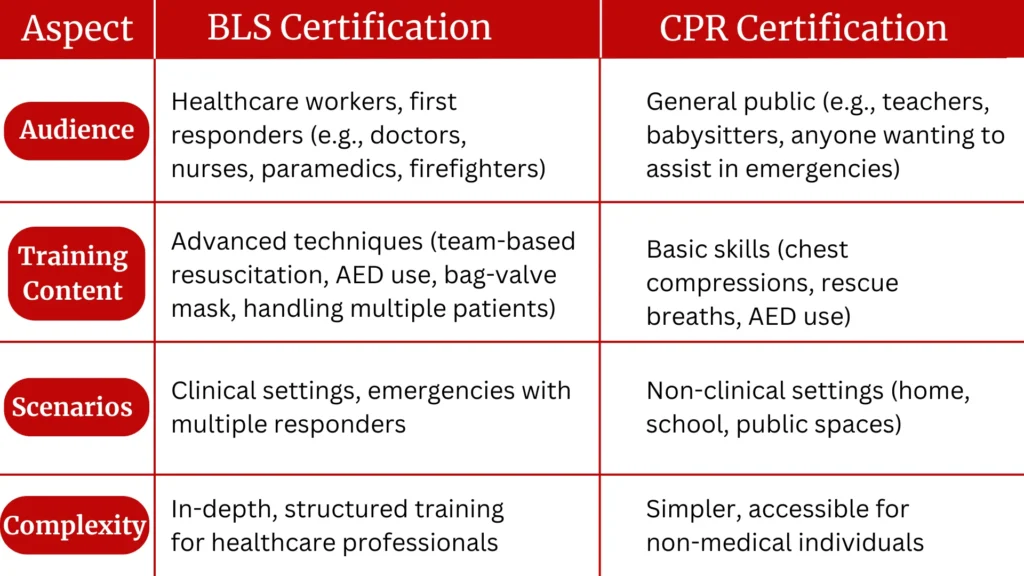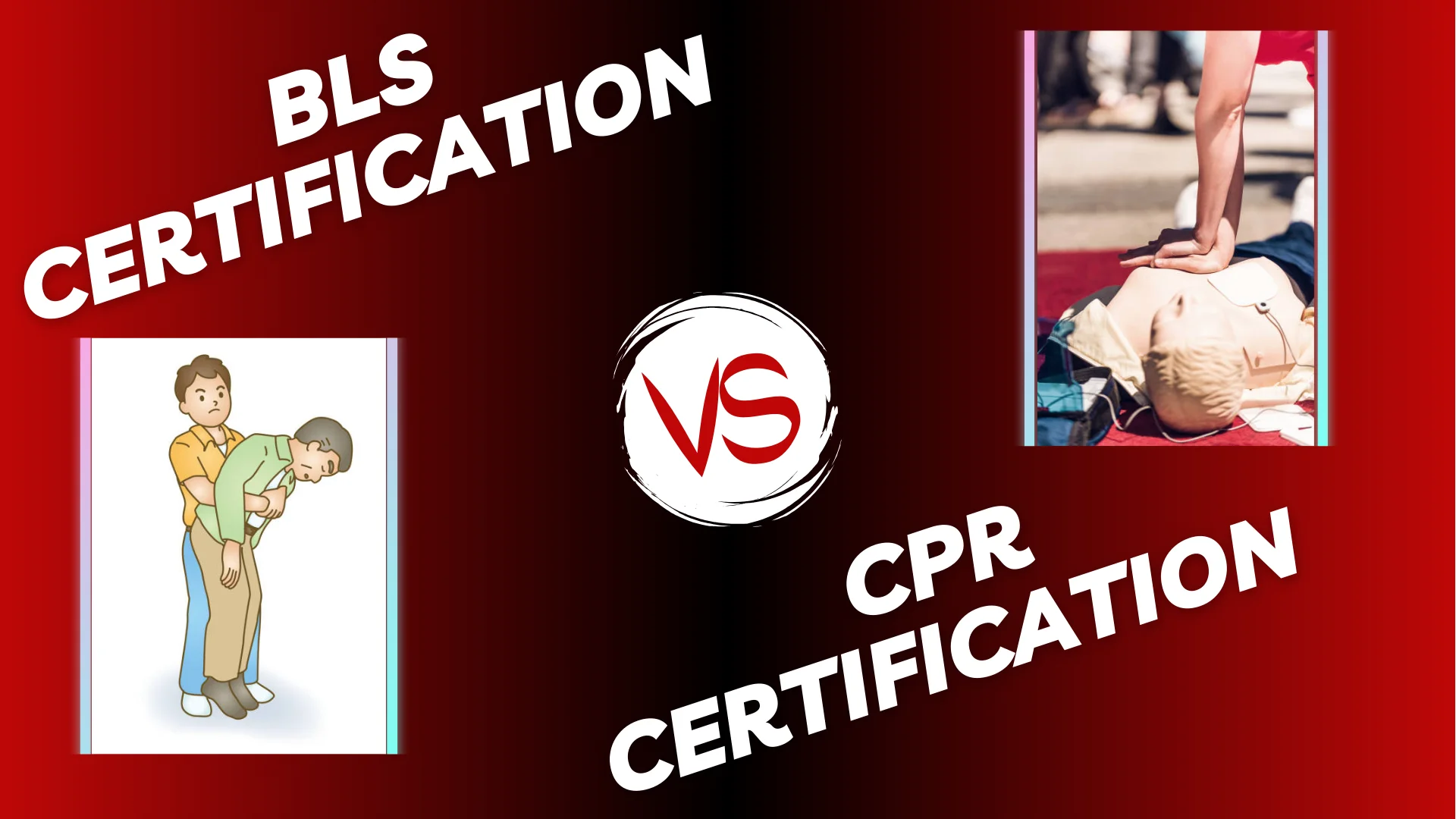Life-saving skills are important in emergencies. BLS (Basic Life Support) and CPR (Cardiopulmonary Resuscitation) are two common certifications. Both teach important techniques but are not the same. Knowing the difference between BLS vs CPR certification helps you choose the right training.
Medical facilities and organizations hire BLS certification holders for their work tasks. The training program provides advanced skills including collaboration in resuscitation procedures and medical device usage alongside life-saving skills from instructors. CPR training helps ordinary people learn how to deliver chest compressions and give rescue breaths correctly.
BLS is essential in hospitals or medical roles. CPR works well for teachers, parents, and everyday emergencies. BLS vs CPR certification equips you to respond in critical moments. Both aim to save lives but have unique approaches.
What is BLS Certification?
Basic Life Support training helps you save lives by showing how to handle dangerous health situations like cardiac arrest or drowning plus dealing with choking. The course aims to give instant medical treatment before skilled professionals arrive. For healthcare professionals and first responders from all disciplines the Basic Life Support certification is a standard requirement.
Training covers CPR for adults, children, and infants, effective use of an automated external defibrillator (AED), and handling scenarios as part of a team. Participants must understand emergency analysis and practice chest compression with breath control.
Getting certified requires you to complete training given by recognized organizations like the American Heart Association. The training needs renewal every 2 years to keep pace with guidelines and retain critical skills.
What is CPR Certification?
CPR (Cardiopulmonary Resuscitation) training shows people how to use simple rescue methods when someone faces cardiac or breathing problems. The program exists to teach people how to start emergency treatment right away and protect lives until professional help gets there.
The certification helps people across society including teachers and babysitters who want to respond to emergencies. Many companies in this field need CPR training for their workers to care for both children and senior citizens.
Participants learn to apply chest compressions, provide rescue breaths, and identify heart attack indications. It focuses on simple and effective actions that anyone can perform with the proper guidance.
The certification process involves completing a course, often available online or in person through organizations like the Red Cross. Renewal is usually required every two years to keep skills current and align with updated safety protocols.
BLS vs CPR Certification – Key Differences
The main difference between BLS vs CPR certification lies in who they are meant for and the level of training they provide.

How to Obtain BLS or CPR Certification
Anyone wanting to prepare for emergencies should get BLS vs CPR certification. Here’s how to obtain your certification:
Accredited Organizations Offering Certifications
The American Heart Association and the Red Cross function as trusted certification organizations. Their courses receive professional and industry standard approval from multiple professional fields. Other providers may include local community colleges or specialized training centers.
Options for Online vs. In-Person Training
You can choose online or in-person training. Online courses allow flexible learning. You can get training even if you have a busy schedule. In-person training gives hands-on experience, especially important for BLS.
Steps to Enroll in Courses and Complete Certification
Enrolling in a BLS or CPR course is easy. Follow these simple steps to complete your certification successfully.
Choose the right course
Determine whether you need BLS Certification vs CPR First Aid based on your goals or job requirements.
Select a training provider
Enroll through an accredited organization. Check course details, fees, and available formats.
Attend the course
Complete the theoretical lessons and participate in hands-on training sessions.
Pass the assessment
Certification requires passing a skills test and, in some cases, a written exam to demonstrate your knowledge and abilities.
Receive your certification
Once you successfully pass your training the certification will become available to you for a period of two years.
Tips for Preparation and Passing the Certification Exam
Studying for your BLS or CPR certification test will simplify the learning experience. Read these tips to help you succeed in your BLS or CPR certification exam.
- Review course materials before attending.
- Practice techniques during CPR or BLS training.
- Watch instructional videos to understand procedures.
- Stay calm during the exam and follow instructions.
- Ask questions if you’re unsure about something.
Renewal and Maintenance of Certification
BLS and CPR training licenses must be renewed every two years. Regular updates keep your skills current with modern medical guidelines. For Online BLS Certification Renewal you will need to take a skills update session. Some providers also offer online options for convenience. Keeping your certification current is important for staying prepared to handle emergencies effectively.
Conclusion
BLS vs CPR certification is important for saving lives in emergencies. They teach skills that help in critical situations, whether at home, work, or in public. Choosing the right certification depends on your needs and role. Training is simple, and renewing ensures you stay ready to help when needed. Your emergency skills grow when you become certified to help during critical moments. It’s a small step that can have a big impact.


